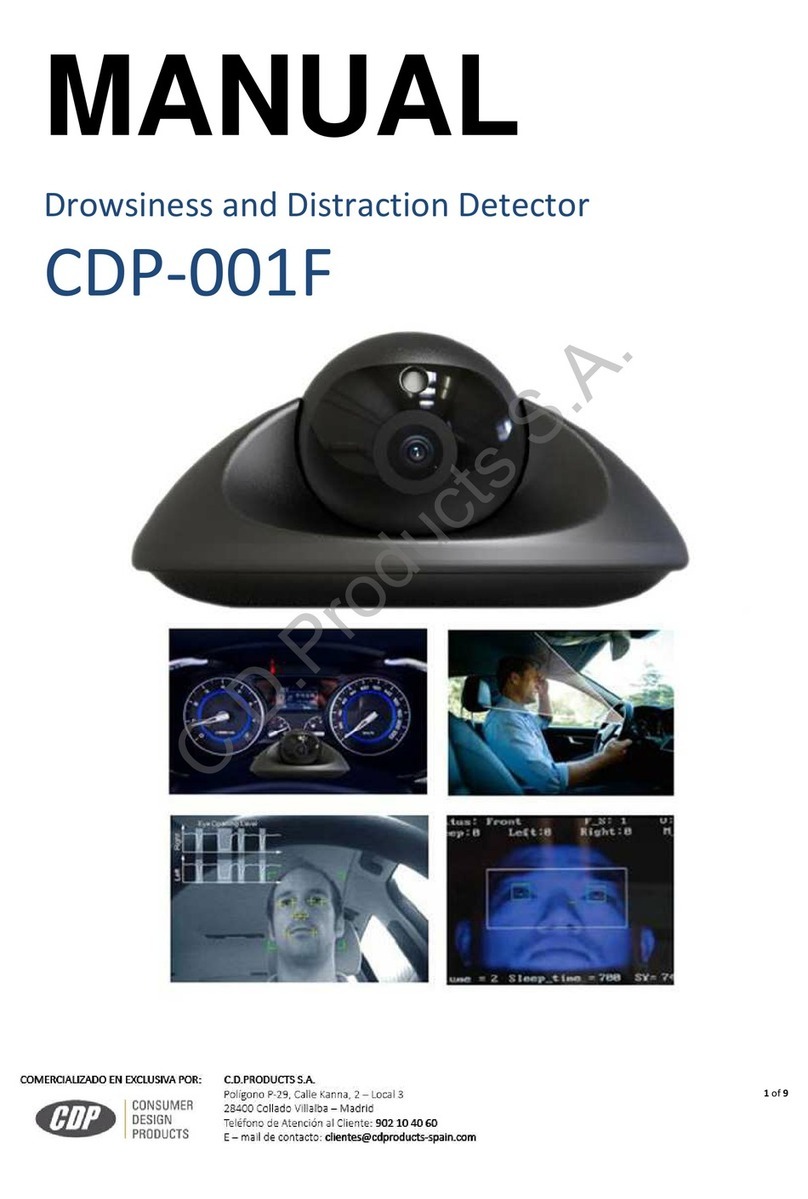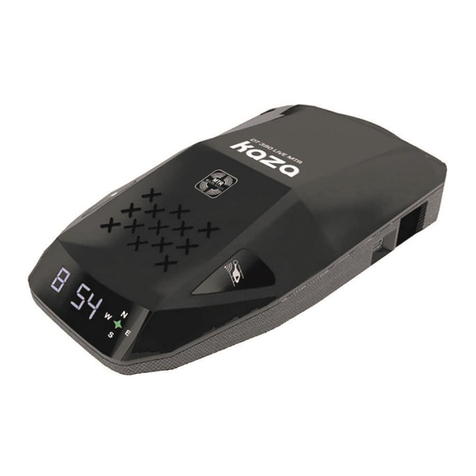
2
Do not use the KAZA CDP DT 110+450 unit to avoid speed limit controls, but rather to promote safer
driving conditions. The device will remind you of the limits that should be complied with at all times,
aiding you to avoid mistakes or blunders that may lead to accidents or speeding fines.
Don't handle the unit while driving, since this may lead to distractions, deviating your attention from
the road.
2. Considerations for the use of the Mobile and Fixed Radar Detector KAZA CDP DT 450 MTR
¿What are the differences between a radar detector and radar warning by GPS?
The radar detector antenna, located in front of the vehicle, captures and detects the existence of a
radar by receiving the radio wavelengths (Ghz) emitted by the radar.
The radar warning by GPS, located inside the vehicle, identifies the position of the vehicle and the
radars by means of an incorporated complete and updated database. Therefore, it doesn't
necessarily need to capture or detect a radar signal. When the vehicle approaches one of these
points, the radar warning will warn you sufficiently in advance (thanks to its database) so you have
time to reduce your speed. The efficiency of a GPS radar warning unit depends on the quality of the
database.
The Mobile and Fixed Radar Detector KAZA CDP DT 110+400 combines both technologies so its
effectiveness is quite high.
How does radar used by the police work?
A radar works as follows: The device emits high frequency electromagnetic radiations that are
reflected in objects. The frequency of this radiation reflected in a static object is different from that
reflected in a moving object, and radars are based on this principle to calculate the speed of the
vehicle. This is known as Doppler Effect.
The only form of detecting these radar emissions is through a radar detector like KAZA CDP DT 450
MTR.
The detector antenna of the KAZA CDP DT 450 MTR model has been specially designed and
configured to receive the emissions of radars used in Spain. Most people are unaware of the
existence of these devices or they believe they are not effective due to the poor results of prior
detectors that were unprepared to receive the signals of the Spanish speed traps. This is due to an
erroneous belief that all detectors offer the same sensitivity and warning distance, but this is not
correct since the system used in speed controls differs a lot in Spain regarding other countries and
the antennas have to be optimized for the Spanish market.
This problem has been augmented lately with new radars used by the police that are very difficult to
detect. This is because they emit in a very high frequency and with a very low nominal power of
emission (between 0.25 and 0.5 mW). For this reason, the detector antennas have to be very
sensitive to the frequencies used in Spain and are not free of false warnings.
3. Recommendations for use of the Mobile and Fixed Radar Detector KAZA CDP DT 450 MTR:
Install the antenna in the vehicle (optional), parallel to the highway and facing forward.
Place it as shown in the photo, so the detector antenna faces the road through the vehicle’s
grills without any obstacle blocking its view.





























